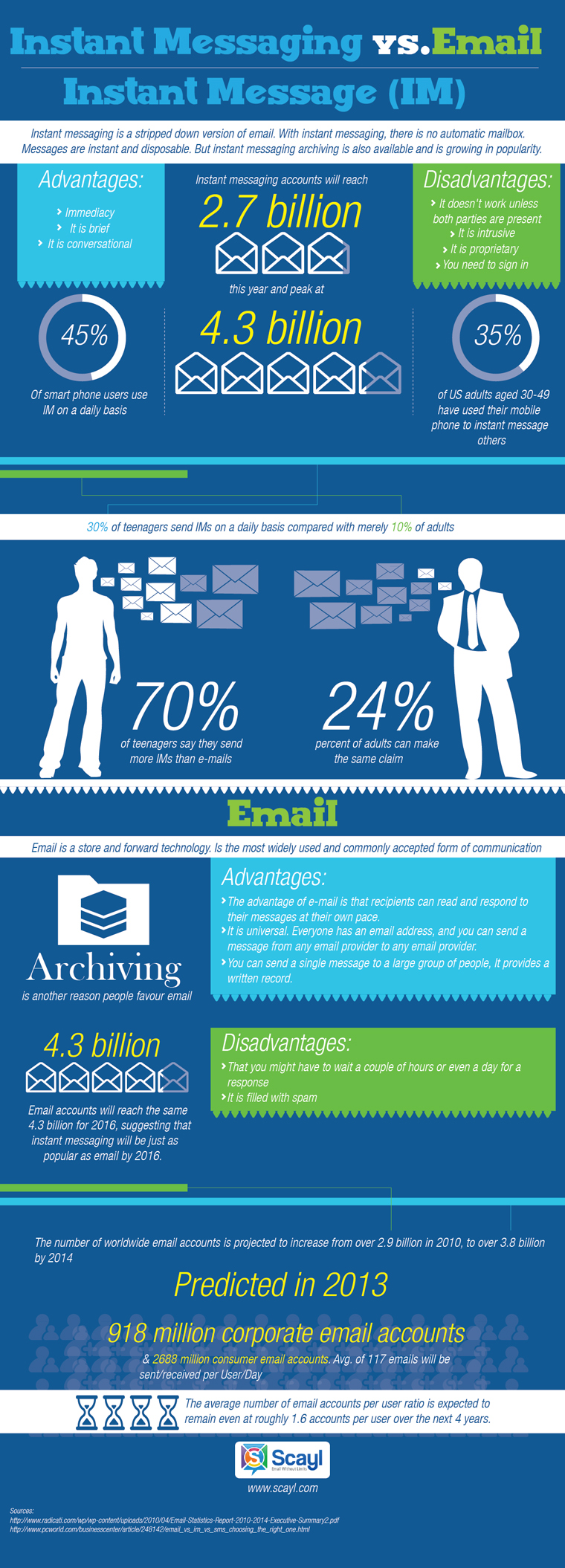Instant Messaging vs. E-mail: What’s So Different? [Infographic]
These days, e-mail and instant messaging, two ubiquitous forms of electronic communication, are available to just about everyone. And because most of us work, play, eat and sleep with a smartphone within arm’s reach, we have access to both forms of talk around the clock. But that doesn’t mean we all use e-mail and IM the same way.
In fact, e-mail and IM are used in starkly different ways. Both technologies have distinct advantages and disadvantages that make each appealing for different kinds of communication. For example, IM is popular in a less visible way, particularly among young people. But while IM facilitates real-time communication and provides users with instant feedback, it does not offer the archiving and universal accessibility of e-mail.
But the e-mail vs. IM debate may be moot: By 2016, an estimated 4.3 billion people will have an e-mail account, and the same number are expected to have an IM account — which suggests IM will soon have the universal appeal of e-mail.
Here are a few more interesting stats on e-mail vs. IM:
- 70 percent of teens say they send more IMs than e-mails, while only 24 percent of adults say the same.
- By 2013, an estimated 918 million corporate e-mail accounts will be in use.
- 45 percent of smartphone users use IM daily.
Check out this infographic from Scayl, an e-mail attachment firm, which breaks down how many people are using email versus IM, who is using each technology and how.








